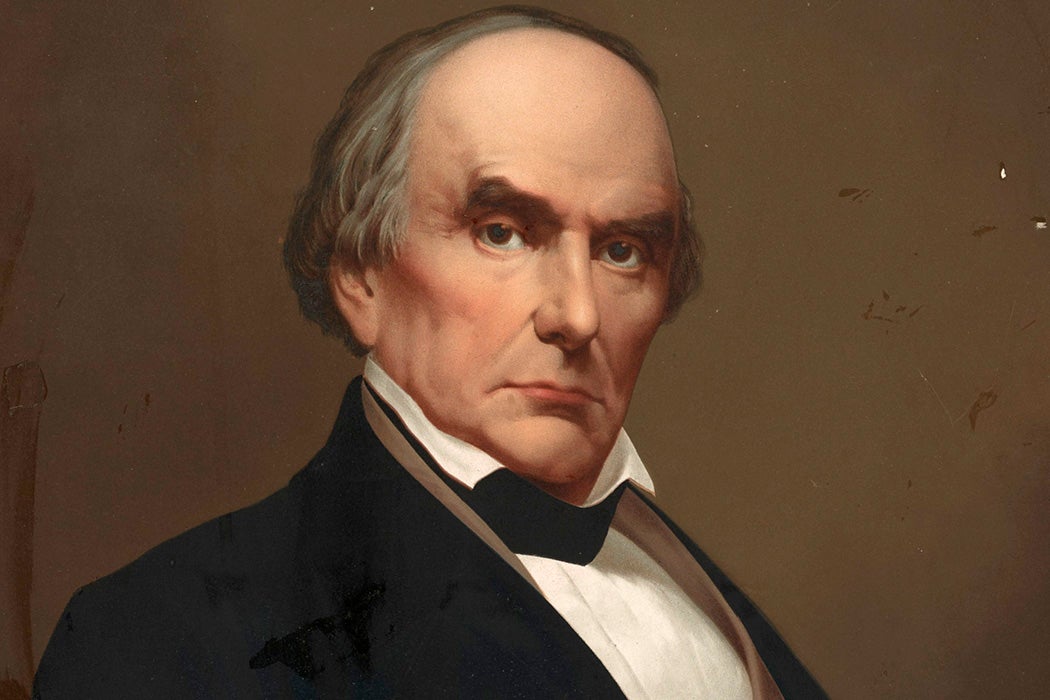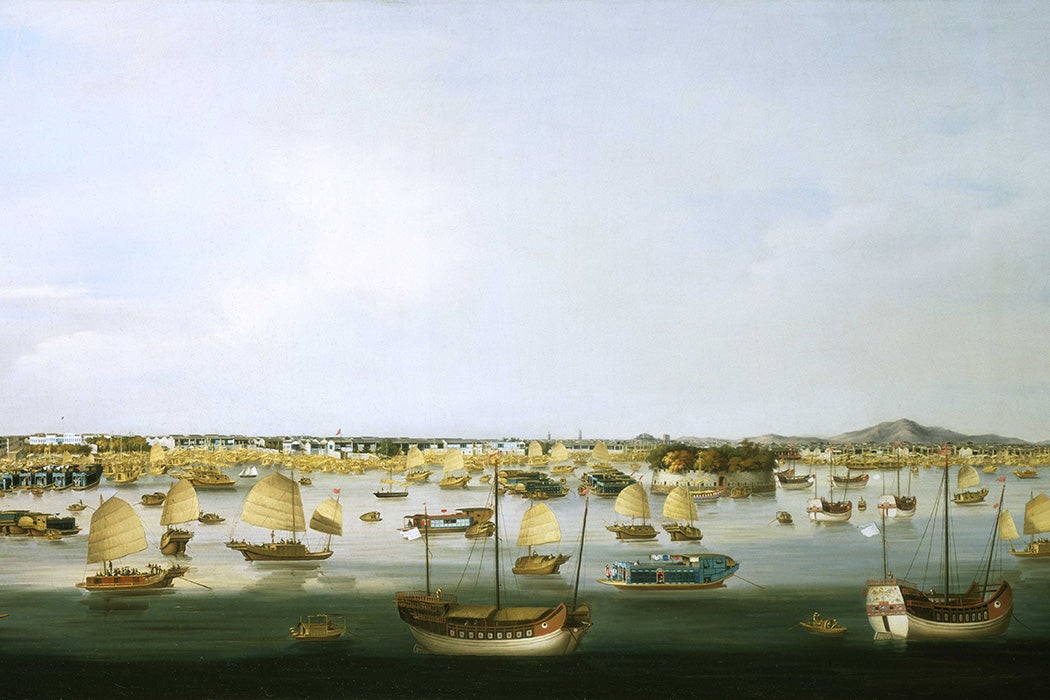The trade imbalance between the United States and China continues to soar. Calls for a trade deal from the corporate world are getting louder, while the public grows worried about foreign competition. Chinese officials complain about Western meddling, and ordinary American businesses are caught in the middle. The year is 1841, and John Tyler has just taken office as the tenth U.S. president, promising to pursue an agenda of “national greatness” at home and abroad.
President Donald Trump has blamed his recent predecessors for the current tensions with China, but many of the dynamics in today’s trade war have been at play for centuries. In fact, while Richard Nixon’s 1972 visit is often remembered as the moment that opened ties with China, America’s relationship with the country goes back to its founding—and it has always been one centered on trade.
Weekly Newsletter
Signed in 1844, the Treaty of Wanghia was the original U.S.-China trade deal. It formalized the burgeoning ties between the two countries, gave new rights to American merchants in China, and opened the door to new commercial and cultural exchanges. Elevating the status of the young republic on the world stage, the deal helped shape U.S. policy in Asia for years to come. It stands as a prime example of how America’s place in the world has often been defined by its role in global markets.
A Practical People
Until the 1840s, America didn’t have much of a policy toward the Chinese empire, leaving private merchants to their own affairs. Since the first commercial trip in 1784, the U.S. had quickly become the second main trading partner with China, after the United Kingdom. Traders were bringing back huge quantities of tea, which soared in popularity. Yet they struggled to find domestic products that the Canton merchants would take in exchange.
“One problem just arises again and again,” said John Haddad, a professor of American Studies at Penn State Harrisburg, in an interview. Haddad wrote a book on early U.S.-China relations entitled America’s First Adventure in China. “The United States and Europe want to buy Chinese products in large volumes and the Chinese do not have comparable demand for American and European goods.”
In the 1800s, traders sailed to the ends of the earth for exotic items, like tropical sea cucumbers, that might appeal to the Chinese consumer. Nothing matched the American thirst for tea. Today, with the trade deficit recently estimated at $54 billion, Americans are still buying more from China than they’re selling. “Now, it’s Nike sneakers and iPhones,” says Haddad.
Still, the trade imbalance has never stopped entrepreneurial Americans from doing business in China. Unlike the British, whose trade in China operated under the royal banner of the East India Company, American commerce was a private affair.
That had some disadvantages, said Peter C. Perdue, a professor of history at Yale University, in an interview. While the British Crown was routinely bailing out bankrupt traders, U.S. merchants had to fend for themselves. But because it was a government enterprise, British trade in China became entangled in diplomatic disputes over opium and the supposed tyranny of the Chinese legal system.
“The Chinese got a much better impression of Americans than the British—you can do business with Americans, they’re practical people,” Perdue said. The memoirs of the day show young men from the American Northeast becoming virtually adopted by Chinese merchants, eager to help them make their fortunes.
The Great Chain
When Tyler took office in 1841, there was no immediate rush to pursue a China policy. The Chinese and British were busy fighting the First Opium War, and the U.S. had its own dispute with the British in the Pacific Northwest.
The decade would become the peak of “manifest destiny,” the belief that Americans were fated to spread across the continent. Tyler, a slaveholding Virginian who would later join the Confederacy, soon sought to annex the Republic of Texas and extend its borders in Oregon. Following Madison and Jefferson, writes one biographer, Tyler believed that “territorial and commercial expansion would allay sectional differences, preserve the Union, and create a nation of power and glory unparalleled in history.”
For Tyler and other proponents of manifest destiny, that expansive vision did not stop at the nation’s borders. He opposed tariffs, believing that free trade would help project American power throughout the world. With U.S. foreign policy, Tyler would establish a “commercial empire,” joining the ranks of the world’s great powers by sheer force of economic will.

By 1843, the administration had turned its attention East (the original pivot to Asia). As envisioned by Tyler’s Secretary of State, Daniel Webster, the U.S. hoped to create a “great chain, which unites all nations of the world, by the early establishment of a line of Steamers from California to China.”
For years, foreign merchants in China were only allowed to trade at Canton (now Guangzhou), and even then under certain restrictions. After nearly three years of waging the First Opium War, Britain forced China to open four new ports to foreign traders, accepting the “European conception of international relations,” as Tyler’s biographer writes. But without a formal treaty, it was unclear whether Americans would be afforded those privileges, and under what conditions.
Meanwhile, the politics of the China trade were growing tense. As the public learned more about U.S. traders in China and the restrictions they faced, according to one account: “many Americans now felt that it was only a question of time until Great Britain would attempt to control all China.” Others, including the ex-president (and now congressman) John Quincy Adams, sympathized with the British struggle against a “despotic” and “anti-commercial” China.
Webster wanted to secure, in a formal treaty, the same benefits now available to the Europeans—and to do so peacefully. In a message to Congress, written by Webster, Tyler asked for funding for a Chinese commissioner, boasting of an “empire supposed to contain 300,000,000 subjects, fertile in various rich products of the earth.” Two months later, Congress obliged with $40,000, and Webster chose Caleb Cushing as America’s first envoy to China.
The Cushing Mission
A young Massachusetts congressman, Cushing was a wholehearted supporter of the administration’s Asia policy. Only a generation after the War of 1812, the U.S. was still playing second fiddle to Europe, and Webster told Cushing to strike a delicate balance.
He should avoid saying anything that would offend the European powers, but make sure to “keep before the eyes of the Chinese the high character, importance, and power of the United States, emphasizing the extent of her territory, her commerce, her navy, and schools.” Webster emphasized the differences between Europe’s old empires and the U.S., which was at a safe, faraway distance from China, with no nearby colonies.
But the mission seemed doomed from the start. Cushing’s flagship ran aground in the Potomac River in Washington, D.C., killing 16 sailors. A month into the journey, in Gibraltar, the same ship caught fire and sank, taking with it Cushing’s “imposing” blue major-general’s uniform that was supposed to impress the Chinese. Finally on the ground in China, Cushing had another problem: he couldn’t get a meeting. For months, he was stuck trading diplomatic letters with local officials, trying to get a face-to-face with the imperial government in Peking.
Cushing also saw, as some American opponents to the mission had objected, that one of his goals was partly moot. American merchants were already enjoying many of the same privileges as British traders, the ones Cushing was sent to secure. “He had to get something that the British hadn’t gotten,” said Haddad, the Penn State professor.
One answer was extraterritoriality: Cushing sought a guarantee that Americans accused of crimes on Chinese soil would be tried in American courts. At the time, says Haddad, the idea seemed noncontroversial. American merchants and missionaries living in China could protect themselves against potentially harsh punishments from local authorities, and the Chinese were happy to let foreign authorities deal with any badly-behaving sailors.
But the policy of extraterritoriality would later become a symbol of Chinese resentment against various nineteenth-century trade deals with foreign powers, which have long been known as the “Unequal Treaties” in China. “Neither side understood that it could become a tool that enabled imperialism,” Haddad said.
Regardless of the situation on the ground, Cushing was determined to formalize these and other rights in a proper U.S.-China treaty. The frustrated envoy made a dramatic move to force a meeting, by sending a U.S. warship near Canton for a twenty-one-gun salute. Whether this was a way of proving his commitment or a less-than-subtle suggestion of gunboat diplomacy, the ploy worked. Imperial High Commissioner Qiying was soon on his way.

After submitting an initial draft, the formal treaty talks in the village of Wanghia lasted only three days. Cushing sent word to Webster that he had formally secured most-favored-nation status for the U.S., the use of four ports beyond Canton, terms on tariffs and the establishment of consular offices, and the privilege of extraterritoriality.
Ratified by President Tyler during his last few months in office, the Treaty of Wanghia was the first signed by China and a Western maritime power not preceded by war. Its text began, fittingly:
The United States of America and the Ta Tsing Empire, desiring to establish firm, lasting and sincere friendship between the two nations, have resolved to fix, in a manner clear and positive, by means of a Treaty or general Convention of peace, amity and commerce, the rules which shall in future be mutually observed in the intercourse of their respective countries.
Those words would govern U.S.-China trade for 99 years.
Wanghia’s Legacy
In the short term, U.S. foreign policy continued to pursue new economic ties in Asia. Daniel Webster returned as Secretary of State in 1850, in the Fillmore administration, and targeted the next link in the “great chain:” Japan. Tightly closed to foreign trade at the time, Webster was emboldened by the success at Wanghia.
Since Webster’s first stint under Tyler, the number of American merchants going to China had nearly doubled, trade volume was up overall, and new harbors, in California and in Oregon, were prospering. American interest in the region was growing, and new technologies, like oceanic steam navigation, promised to keep U.S.-China trade booming.
As America’s global stature grew (and as Britain’s declined), so did its trade with China. “The U.S. starts to emerge with the idea that ‘we are friends with China,’” said Perdue, the Yale historian. “It’s about making money, for both sides—that’s the American attitude.”
When the United States signed its first trade deal with China, it was barely 50 years old, on the verge of civil war, and still feeling its way on the global stage. Its leaders saw the opening of international trade routes as the path to prosperity. Today, China is the rising power, and America’s brand as the world’s happy trader is being revised.
“The U.S. has now gotten itself into a position where we are no different from anybody else,” Perdue said. The pragmatism that governed U.S.-China trade for much of its history—the same attitude that endeared many Chinese and American merchants to each other when they first met in Canton—has waned.
In the 1880s, says Perdue, during a moment of Chinese backlash against foreign interference, a prominent Canton merchant came out with a best-selling polemic against free trade. His message: “Those foreigners treat trade as war. And we have to do the same thing.” The book was recently reprinted in China, and is selling well.







